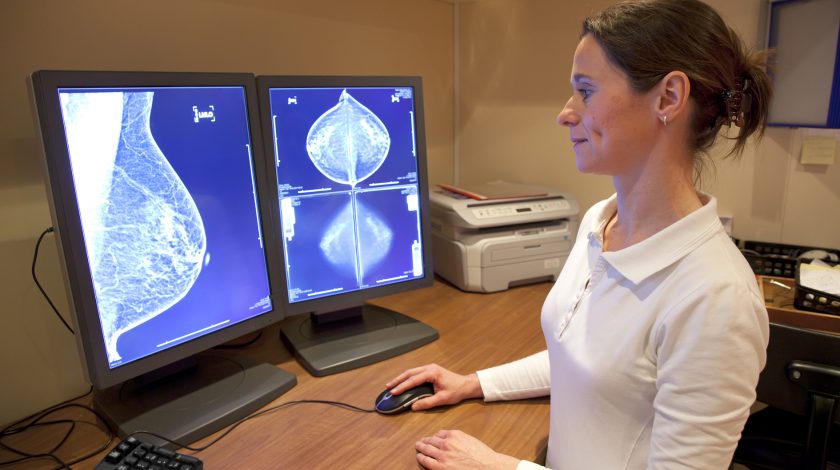
Breast cancer specialists are working on finding new ways to detect breast cancer while at the same time studying existing screening methods to find out what is best.
Scientists are working on finding new ways to detect breast cancer while at the same time they are studying existing screening methods to find out what is best.
Take, for example, mammograms. During a mammogram, a technician takes an X-ray of a woman’s breast as it’s compressed between two glass plates. A radiologist then examines the image for tumors.
They are the best screening tools available: The number of deaths from breast cancer has fallen by 30 percent in the U.S. since mammography was introduced in the 1970s. That’s because when cancer is found early, the chances of beating it are greater.
But mammograms aren’t 100 percent accurate. A mammogram can look normal even when cancer is present, and it can look abnormal even though there’s no cancer in the breast at all.
3-D mammography
Standard mammograms are two dimensional, but for the 40 to 50 percent of women with dense breasts, both tumors and breast tissue can show up as white masses on 2-D images.
Three-dimensional mammograms show a more detailed view of the breast, so women with fibrous or dense breasts may benefit from a 3-D screening, said Dr. Otis Brawley at the American Cancer Society.
“It might find disease that we need to find that two-dimensional does not,” he said. “There are potential cons in that it has a higher cost, higher amount of radiation, given every dose, every time a person has a test, as well as it may find a higher number of false positives.”
Cost aside, one study involving 13 U.S. hospitals showed that three-dimensional mammograms picked up an additional 40 percent of invasive cancers.
Ultrasound
For an even better picture, a woman could have an automated whole-breast ultrasound. During this procedure, a woman lies on her back as the ultrasound device moves in parallel rows so no areas of the breast are missed. The exam captures between 3,000 to 5,000 images that are then interpreted by a radiologist.
Dr. Megha Garg is the director of the breast-imaging program at the University of Missouri cancer center.
“This is a new screening technique,” she said. “It helps detect additional breast cancers in females who have dense breasts.”
The whole-breast ultrasound doesn’t use radiation, so it poses less of a risk than a mammogram does, but Garg says it’s not time to ditch the standard mammogram.
“This tool does not replace the traditional mammogram. Mammograms are the gold standard for finding breast cancer,” she said. “This helps the mammogram in those females who have dense breasts.
Studies are underway to find out which techniques are the most effective. While North America, Western Europe and Australia have the highest rates of breast cancer, the World Health Organization reports that almost 50 percent of the cases and nearly 60 percent of the deaths occur in less-developed countries. If detection and treatment could be improves, at least 400,000 women’s lives could be saved every year.
[“Source-voanews”]
